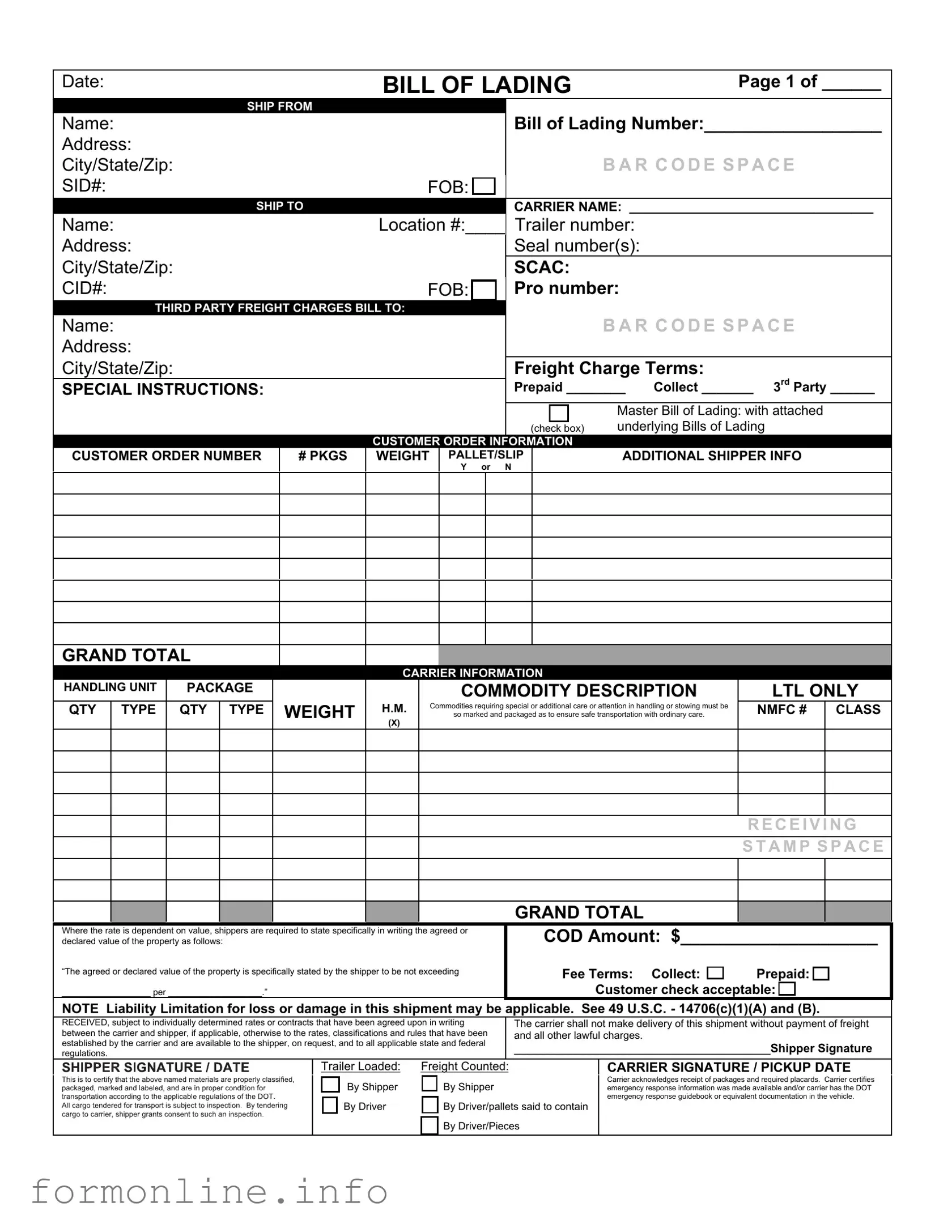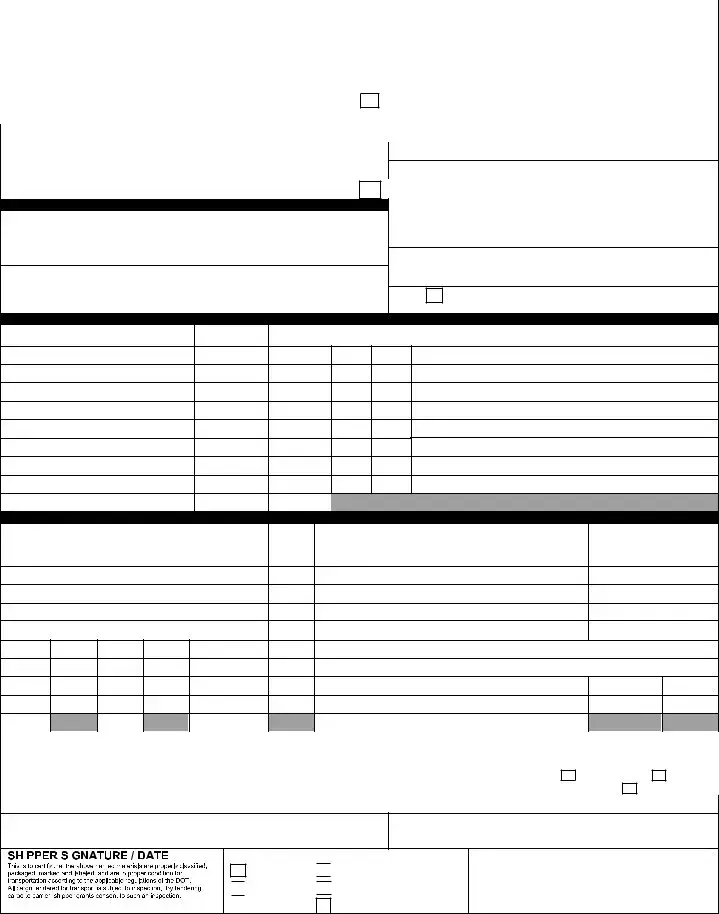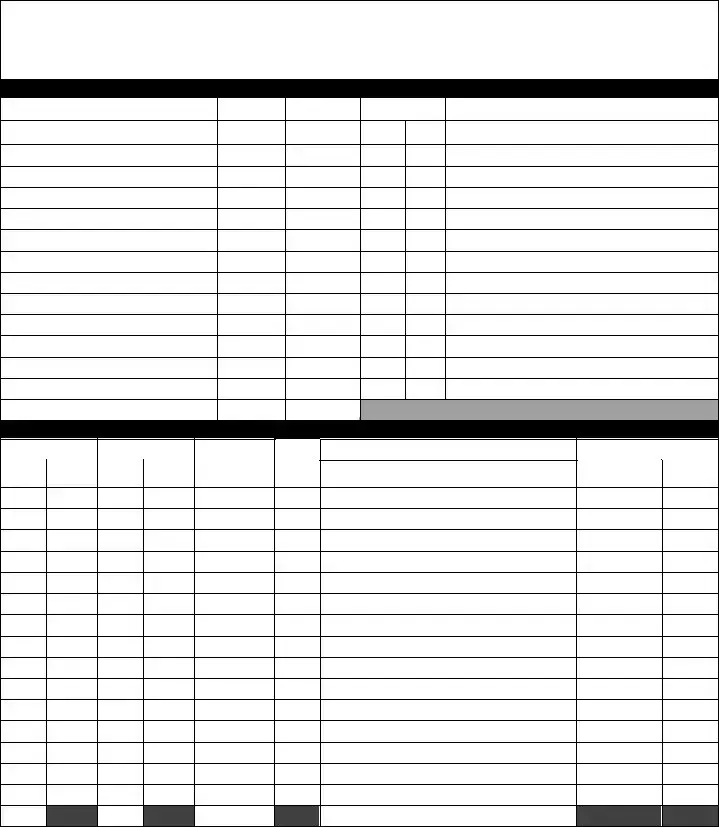The Bill of Lading (BOL) serves as a crucial document in the shipping industry, but it shares similarities with several other important documents. One such document is the Air Waybill (AWB). Both the BOL and AWB function as contracts between the shipper and the carrier. They provide proof of receipt of goods and outline the terms of transportation. However, while a BOL is used for sea freight, an AWB is specifically designed for air transport, reflecting the different modalities of shipping.
Another document similar to the BOL is the Freight Bill. This document details the charges for transportation services provided by the carrier. Like the BOL, the Freight Bill serves as a receipt for the shipment. However, it focuses primarily on the payment aspects rather than the terms of carriage. Both documents are essential for tracking and managing shipping transactions, but they cater to different aspects of the shipping process.
The Commercial Invoice also bears resemblance to the Bill of Lading. This document outlines the sale transaction between the buyer and seller, detailing the goods sold and their value. While the BOL serves as a receipt and a contract of carriage, the Commercial Invoice is critical for customs clearance and payment processing. Both documents are often used together in international shipping to ensure smooth transactions and compliance with regulations.
The Packing List is another document that parallels the BOL. It provides a detailed breakdown of the contents of a shipment, including quantities and descriptions of the items. Like the BOL, the Packing List helps in verifying the goods being shipped. However, it is primarily used for inventory management and does not serve as a contract of carriage. Together, these documents facilitate efficient handling and delivery of goods.
The Certificate of Origin is also similar to the Bill of Lading in that it is often required in international trade. This document certifies the country in which the goods were produced. While the BOL serves as a contract and receipt, the Certificate of Origin is crucial for determining tariffs and trade agreements. Both documents are vital for ensuring compliance with international trade laws.
In the realm of legal documentation, securing a reliable Power of Attorney form is essential for managing affairs effectively. This form allows individuals to designate an agent who can make critical decisions on their behalf, ensuring that their interests are protected during challenging times. To take the first step, fill out the Power of Attorney form by clicking the button below.
Lastly, the Delivery Order shares similarities with the Bill of Lading. The Delivery Order is issued by the consignee or shipper, directing the carrier to release the goods to a specific party. Like the BOL, it acts as a form of authorization for the release of goods. However, the Delivery Order is typically issued after the BOL has been created, serving as a subsequent step in the shipping process.


 to certify that the above named materials are properly classified, packaged, marked and labeled, and are in
to certify that the above named materials are properly classified, packaged, marked and labeled, and are in proper condition for transportation according to the applicable regulations of the DOT.
proper condition for transportation according to the applicable regulations of the DOT.
 By Shipper
By Shipper
 By Driver
By Driver 
 By Driver/pallets said to contain
By Driver/pallets said to contain